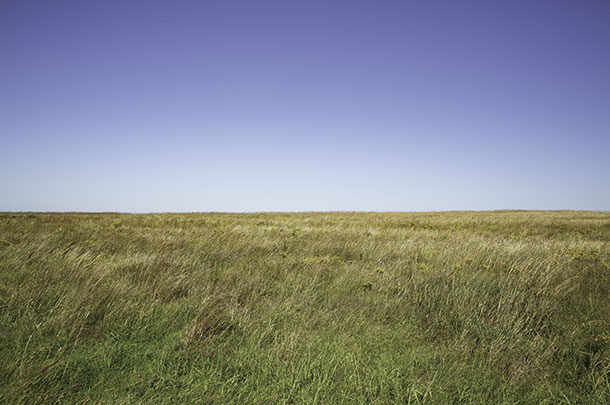What are ecosystem processes? They are the water cycle, the mineral cycle, the energy cycle and secondary plant succession. These four processes exist on all land. They are interrelated and controlled by weather, climate, topography and soils. The functionality of these processes ultimately determines how productive a pasture can be in a given year.
A grazing manager can maximize the efficiency at which these processes function with knowledge and understanding of these factors:
- Effective rainfall
- Soil dynamic properties
- Plant community dynamics
The key to good functionality for these processes is soil surface management. Soils should not be compacted, living plants or plant litter should cover the soil surface, soils should be managed to improve or maintain organic matter and there should be a diverse plant community.
Managing your green
Grazing managers manage soil surface by managing plants. Plant leaves are like solar panels that capture the sun’s energy, making it available through photosynthesis. Grazing managers use animals to manage healthy plant growth and convert the sun’s energy into animal production. This completes the energy cycle and facilitates the mineral cycle as grazing animals recycle plant nutrients through manure and urine and physical impacts, such as trampling.
Properly managed grazing promotes a functioning water cycle. Good forage plant or litter cover promotes rainfall infiltration and filters water that does run off-site. Good grazing management also helps maintain or increase soil organic matter, which also facilitates a good water and mineral cycle.
Well-managed native grazing lands are usually made up of high successional plant communities with a diverse mixture of warm- and cool-season plants. Lower successional plant communities are usually not as diverse or as stable as high successional communities. High successional plant communities also have better developed soils and efficiently functioning ecosystem processes.
Several factors influence plant succession, and they can be abiotic or biotic factors. Abiotic factors include: soils, topography, fire, chemicals and mechanical. The primary biotic factor is grazing-animal impact. Plant succession can be slowed, stabilized or advanced through management of factors that can be controlled.
For example, when high successional native plants are overgrazed, they can be outcompeted by less desirable lower succession plant species. This is because root growth is directly affected by the amount of aboveground leaf area. So when animals overgraze the more palatable high succession plants, root growth effectively stops. Less palatable low succession plants are not overgrazed, root growth does not stop and those plants gain a competitive advantage.
Research has shown that when 60% or more of the leaf is removed, 50% of root growth is stopped. So grazing managers should strive to limit leaf removal to no more than 50% of the total. Of the 50% that is removed, half should consumed by grazing animals and the other half utilized by wildlife, insects, trampled, etc.
Observation on the ground
Fall is a good time to take the opportunity to evaluate your pastures to see how ecosystem processes are working with your grazing management. Make an effort to walk through your pastures. Do you see bare ground, or is there litter, forbs and grasses protecting the soil surface? Are you seeing a change in the plant community, such as increasing cool-season annuals or woody species?
If you are seeing indications of lower successional plant communities, now is the time to plan for making adjustments to your grazing management to reverse the trend. Also, if woody plant encroachment is increasing, you may need to consider adding prescribed burning, chemical inputs or mechanical controls to maintain your pastures.
Poorly functioning ecosystem processes not only result in unhealthy grazing lands, but also reduced animal performance and production. The key to remember is effective rainfall, forage production and forage use by grazing animals are not static.
Constantly monitor grazing pastures to ensure ecosystem processes are working efficiently and make adjustments as needed. It takes forage to grow forage and to help ensure properly functioning ecosystem processes.








